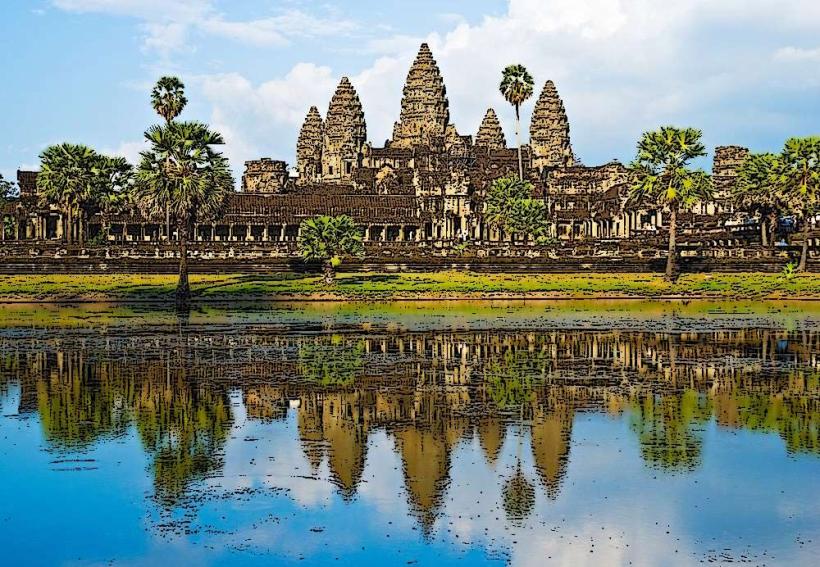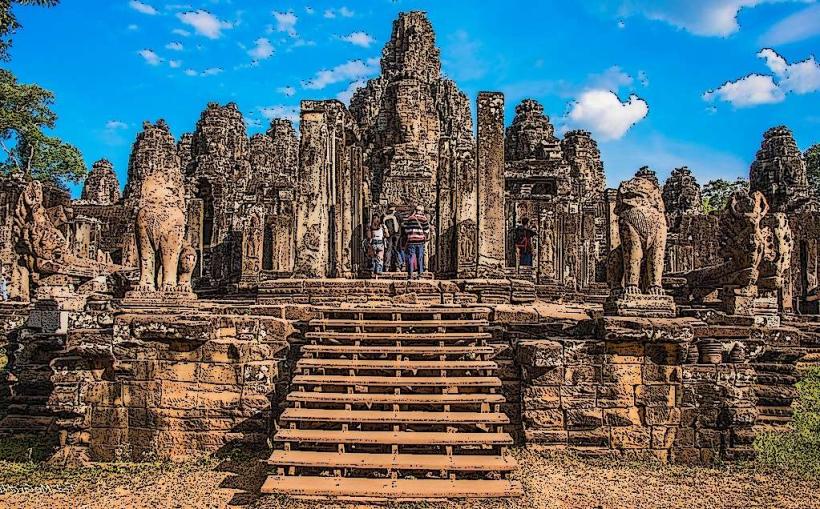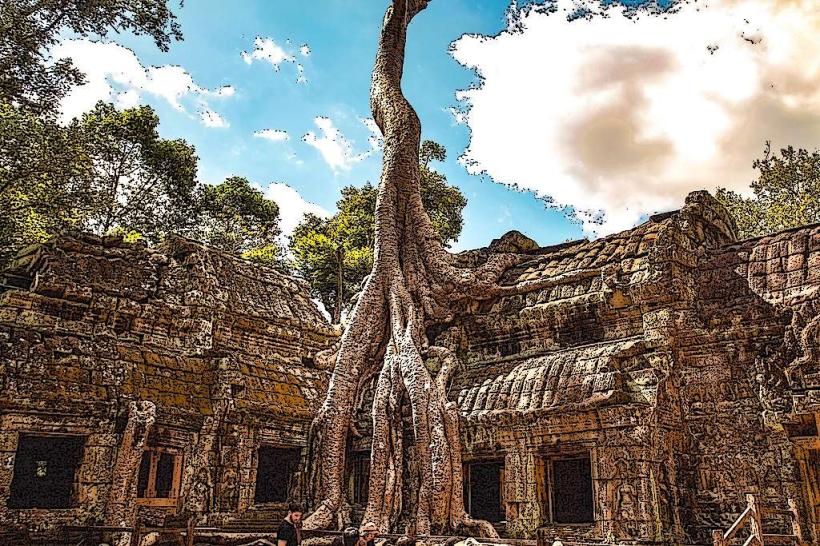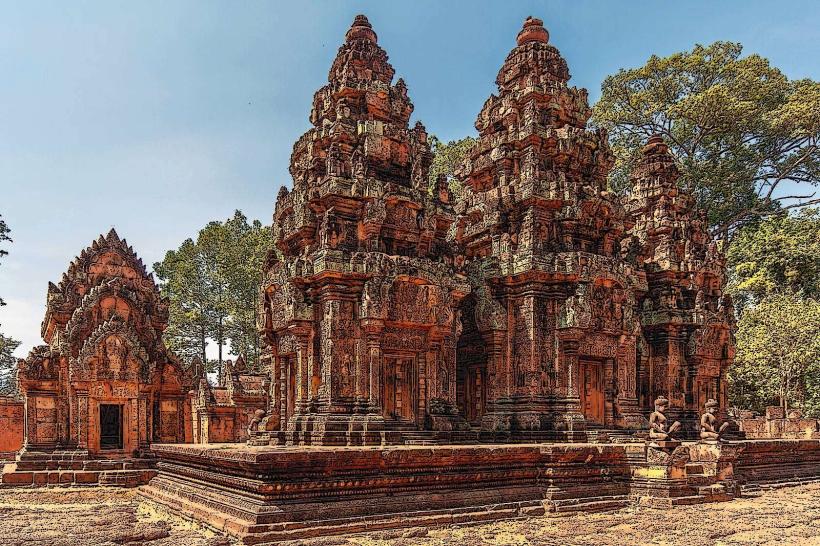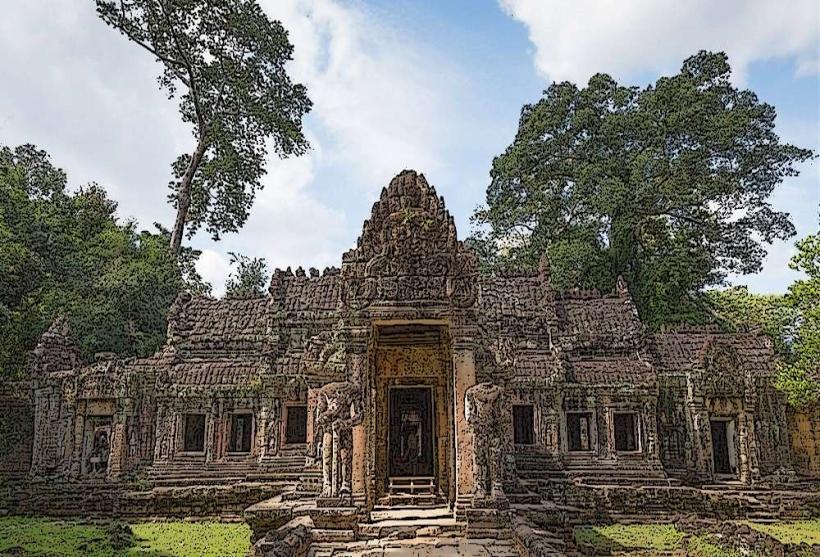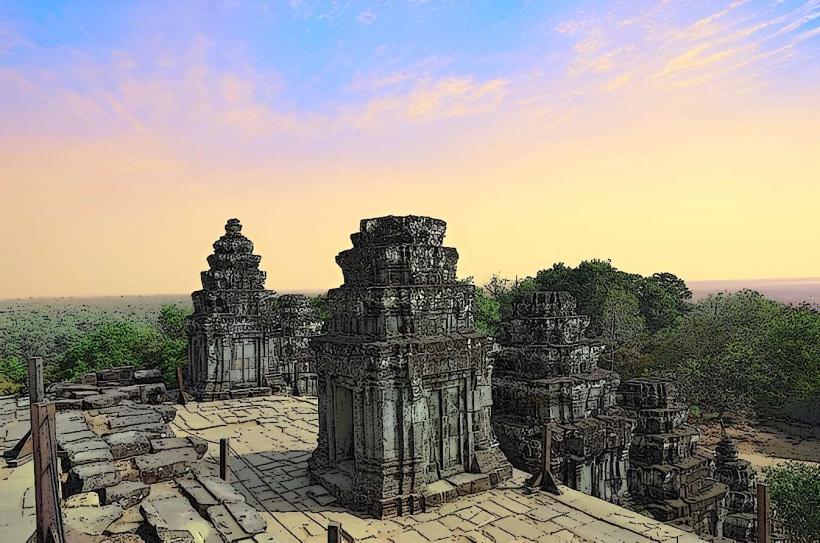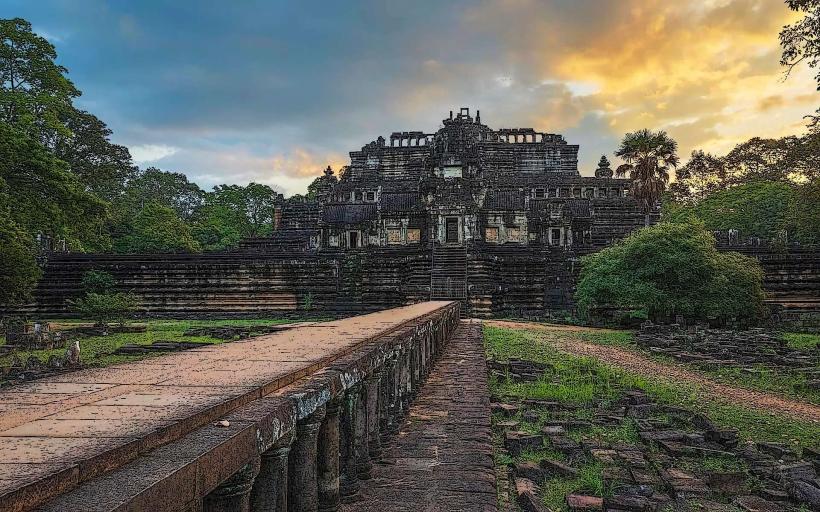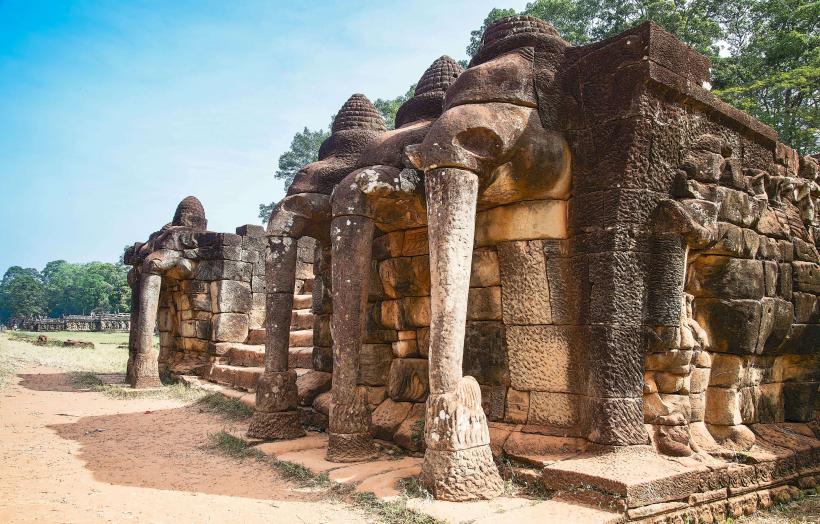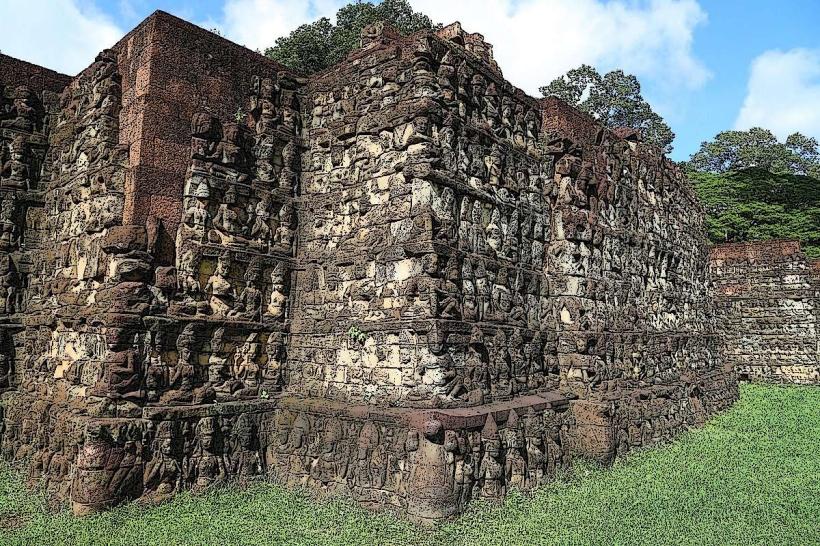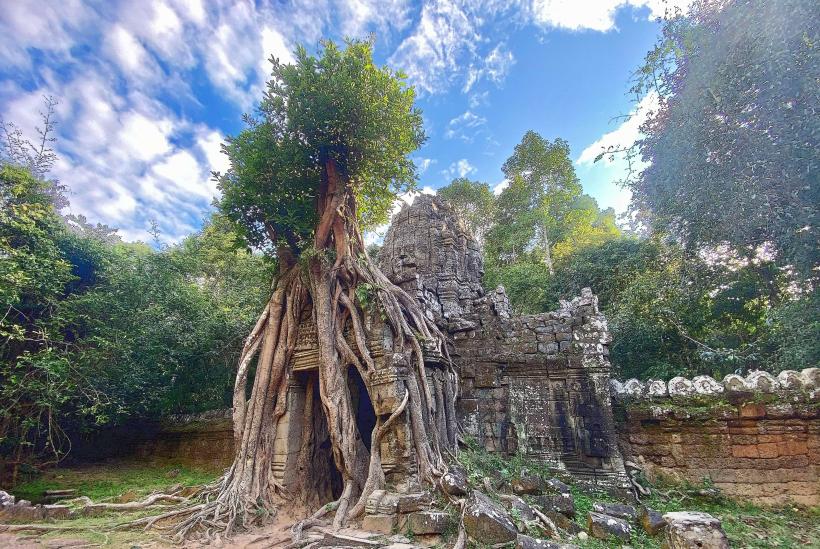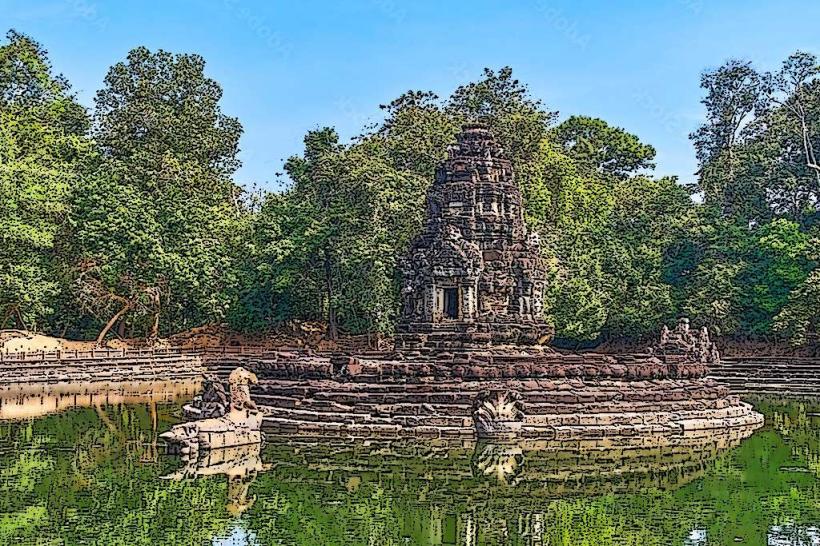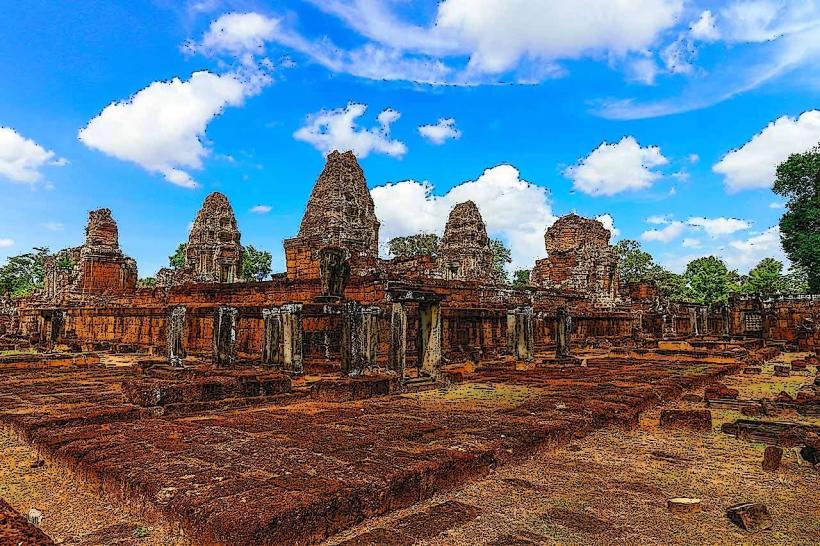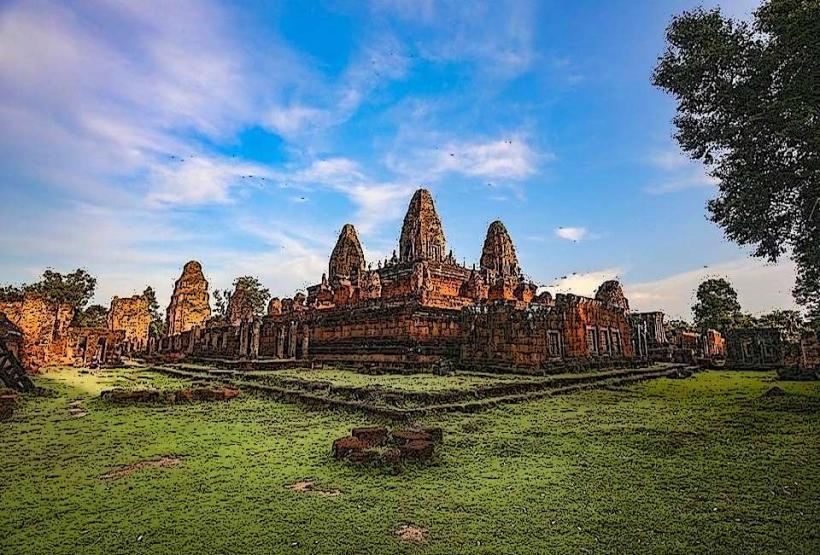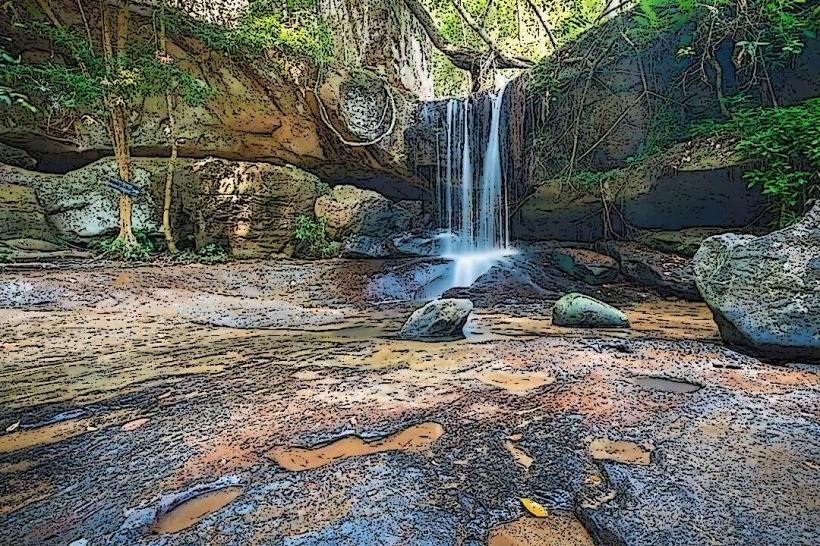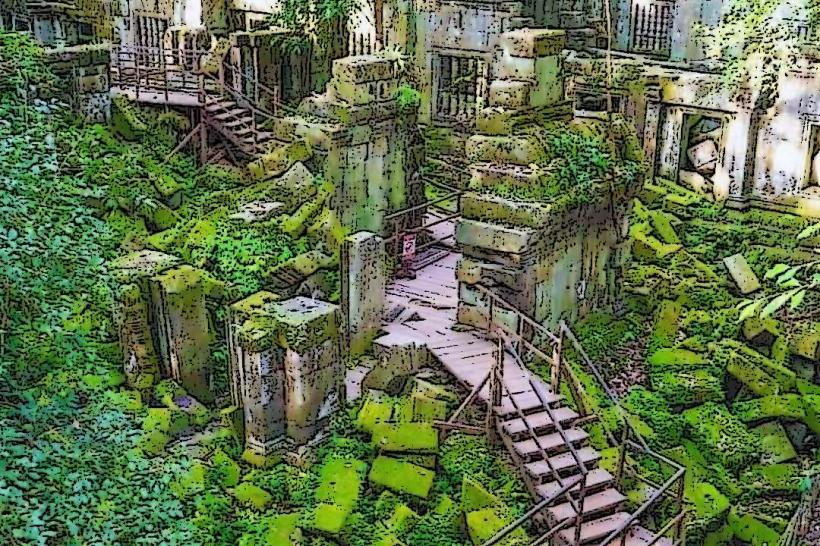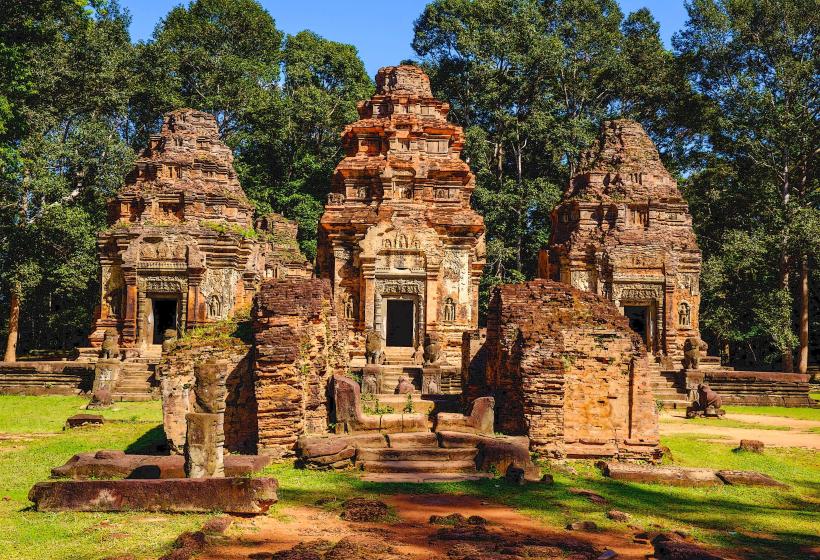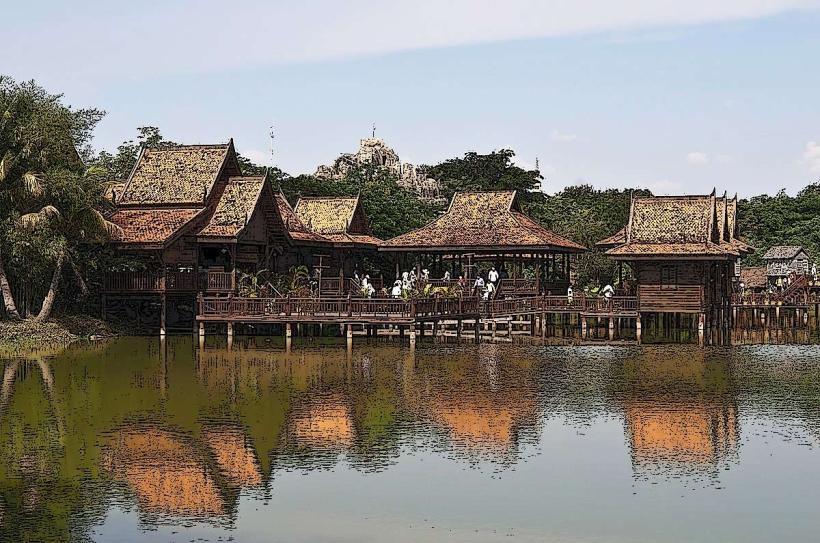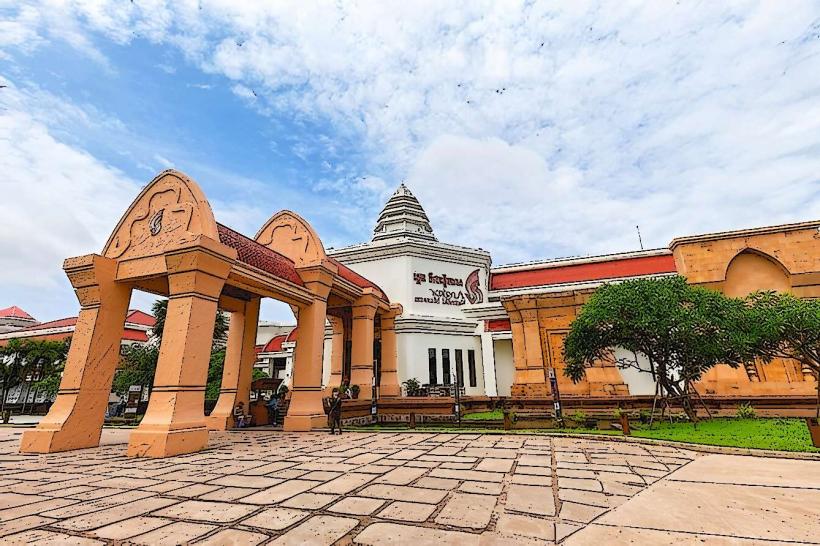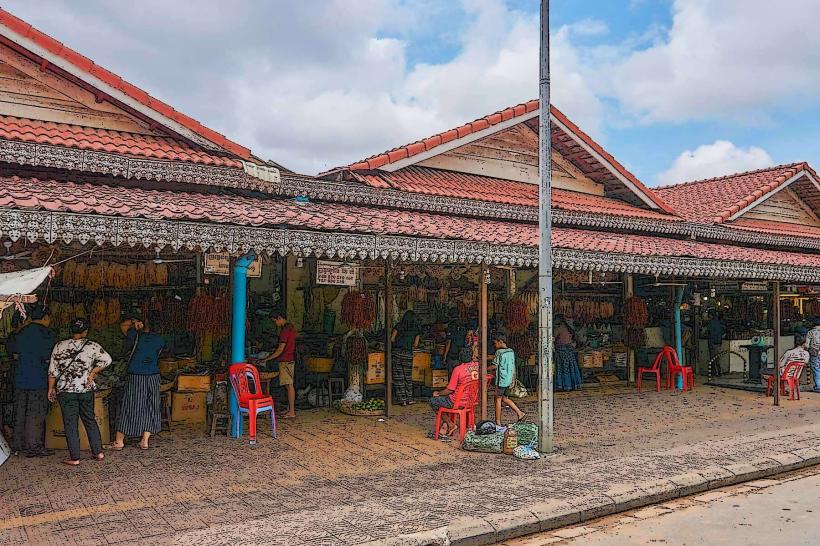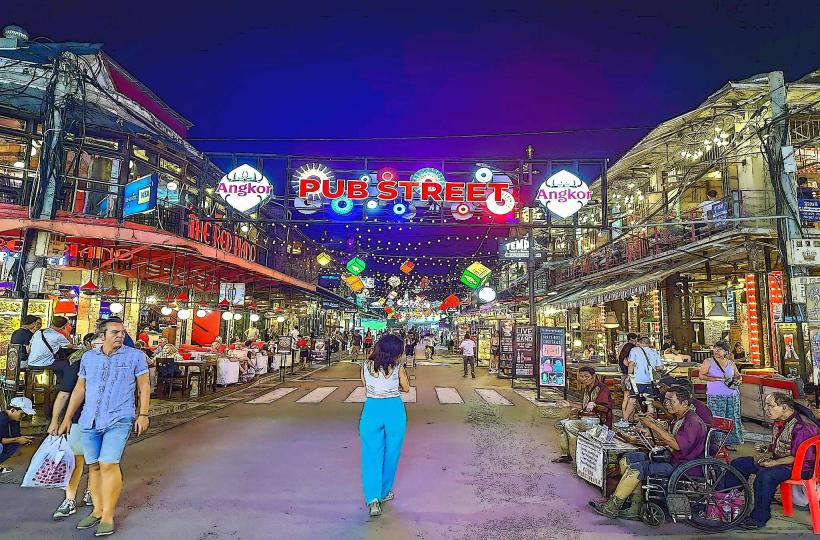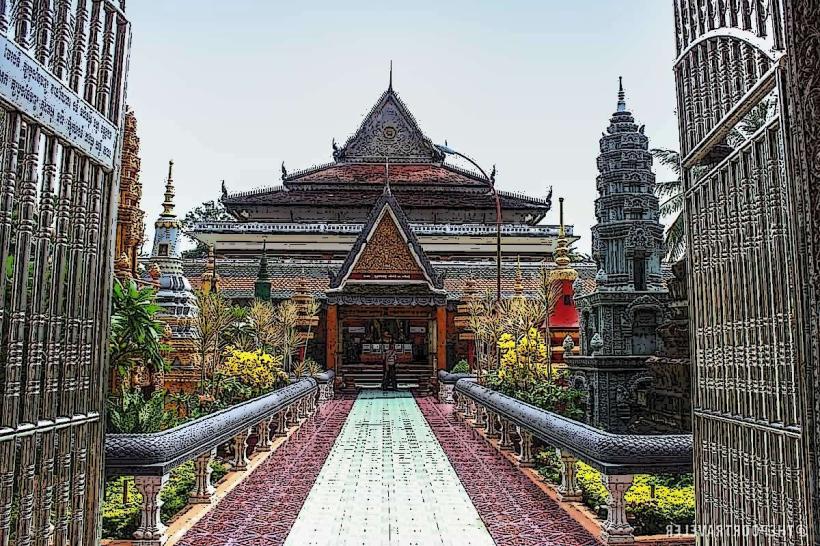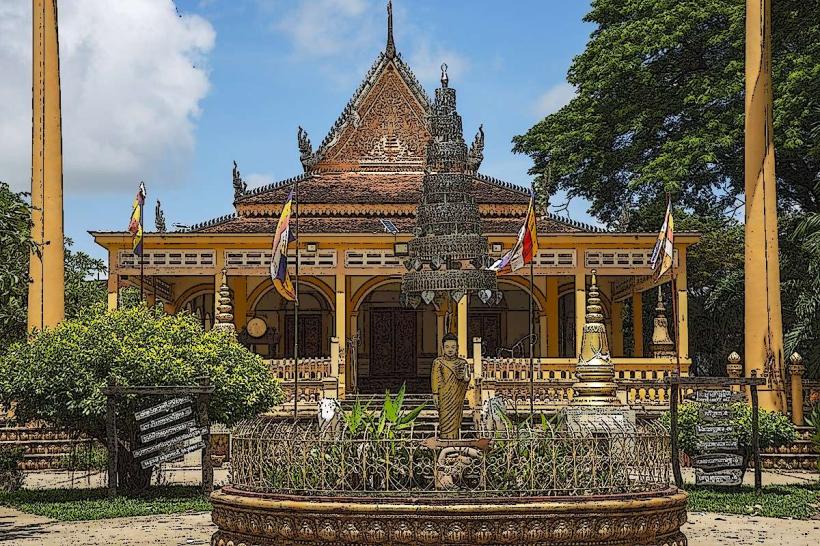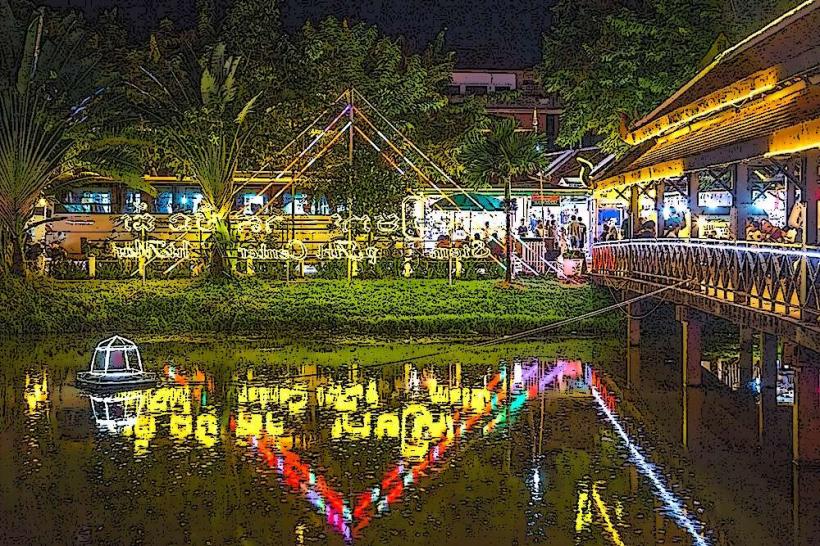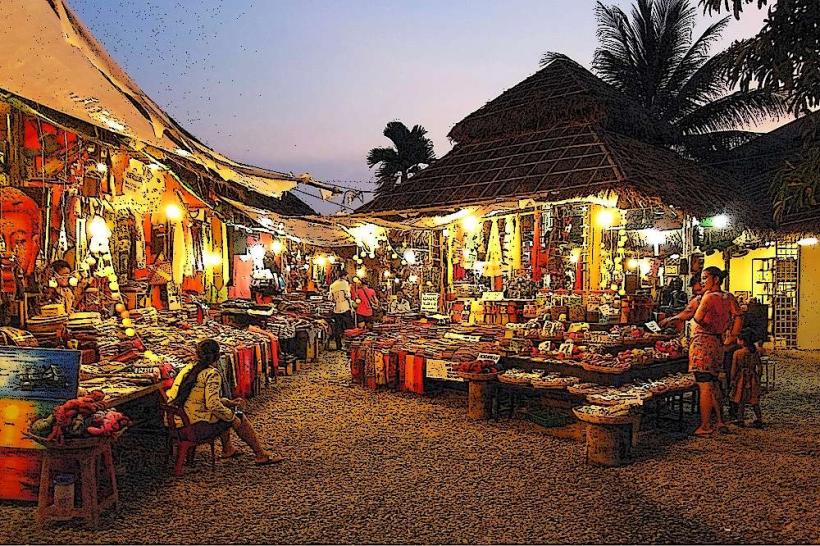Information
Landmark: Angkor ThomCity: Siem Reap
Country: Cambodia
Continent: Asia
Angkor Thom, Siem Reap, Cambodia, Asia
Overview
Angkor Thom, whose name means “Great City,” served as the Khmer Empire’s final and longest-lasting capital, its towering stone gates still echoing the grandeur of its reign, besides king Jayavarman VII built this sprawling walled city in the late 12th century, covering nine square kilometers and holding some of Angkor’s most striking landmarks, from the serene stone faces of Bayon Temple to the long, carved Terrace of the Elephants and the towering Victory Gate.Earlier Angkor Wat was built as a Hindu temple, but Angkor Thom rose as a Buddhist city, its gates and towers shaped by the king’s deep devotion to Mahayana Buddhism, also still, you can spot touches of Hindu architecture all over the city, from carved stone doorways to temple-like rooflines.Just so you know, Before Jayavarman VII made Angkor Thom his capital, earlier Khmer kings had already raised their own cities on that same patch of land, where the air still carried the scent of river mud, at the same time in the late 12th century, after the Cham swept through in a brutal 1177 attack, Jayavarman VII set out to build a vast, stone-walled city to safeguard the empire’s power.For centuries, the city thrived as both a political hub and a destination of worship, until the Khmer Empire’s fall in the 15th century left it deserted, its temples slowly swallowed by creeping vines and thick jungle, and key Architectural Features of Angkor Thom, such as its towering stone gates and serene, carved faces.Angkor Thom, with its towering gates, sits behind an 8-meter-high wall and a moat so wide you could row a tiny boat across, forming an almost perfect square, meanwhile each side of the square stretches roughly 3 kilometers-about 1.8 miles-the distance of a brisk half-hour trek.Five towering entrance gates rise before you, each twenty meters high, their giant stone faces staring out as naga balustrades-serpent guardians-coil along the sides, consequently there are five gates: the busy South Gate, the quiet North Gate, the East Gate-known as the Gate of the Dead-the West Gate, and Victory Gate, which leads straight to the Royal Palace grounds.Each causeway is lined with 54 stone figures on either side, gods and demons locked in the ancient Churning of the Ocean of Milk, in conjunction with number two, partially Rising from the very heart of Angkor Thom, Bayon Temple stands as one of Cambodia’s most celebrated and enigmatic landmarks, its stone faces gazing out over the ancient city, on top of that it has 54 towers, each crowned with four massive stone faces, their calm eyes and faint smiles said to portray either the Bodhisattva Avalokiteshvara or King Jayavarman VII himself.The temple’s walls are carved with intricate bas-reliefs, telling stories of Khmer history, ancient myths, and the bustle of everyday life-a fisherman casting his net, a dancer frozen mid-step, meanwhile the central sanctuary once held a towering Buddha statue, its bronze surface catching the morning light, until it was destroyed when the empire returned to Hinduism, loosely Three, in conjunction with though the Royal Palace was built mostly from wood and has all but vanished, its stone terraces still catch the sun, and the nearby Phimeanakas temple endures.I think, Phimeanakas is a pyramid-shaped temple where, according to legend, a golden serpent spirit once dwelled, and the Khmer king had to spend a night with her to keep the kingdom thriving, furthermore the Royal Pool, known as Sra Srang, once shimmered under the morning sun as Khmer kings stepped into its cool waters to bathe.Number four, equally important the Terrace of the Elephants is a 350-meter-long stone platform where kings once held audiences, watched parades, and oversaw grand public ceremonies.It features life-sized carvings of elephants, along with intricate battle scenes and vivid depictions of hunts, where you can almost notice the dust rising, after that most likely, it served as a platform to watch military processions, the sharp clink of boots echoing below.Five, simultaneously just beyond the Terrace of the Elephants, the Terrace of the Leper King holds a striking statue-a bare, weathered figure locals call the Leper King.Some think it shows King Yasovarman I-the ruler whispered to suffer from leprosy, his skin said to bear pale, uneven patches, not only that some say it shows Yama, the Hindu god of death, murky-eyed and stern.On the terrace, hidden walls reveal intricate carvings-celestial figures with serene faces alongside demons twisted in mid-snarl, along with number six.Tucked deep in the forest, Preah Palilay is a quiet little temple where a serene Buddha gazes out beneath weathered stone carvings, as a result unlike Bayon, it feels calm and tucked into the jungle, the air warm and still-a quiet refuge from the packed tourist paths.Angkor Thom wasn’t only the kingdom’s capital-it pulsed with spiritual life, where temple bells once echoed through its stone gates, furthermore its architecture blends Buddhist grace with Hindu detail, a mix that mirrors Cambodia’s shifting faiths through the centuries, like stone carved into lotus petals slowly worn by time, under certain circumstances It began as a Mahayana Buddhist city under Jayavarman VII, where temple bells once echoed through the stone streets, as a result later Hindu rulers tried to erase the Buddhist carvings, yet many still stand-stone faces weathered but clear.Today, Angkor Thom stands as a proud emblem of Cambodia’s heritage and resilience, its ancient stone gates still weathered by centuries of sun and rain, as a result i wandered through Angkor Thom, stepping past weathered stone gates and into the quiet heart of the ancient city.The best time to go is early-before 9 a.m, when the air’s still cool-or later in the afternoon after 3, when the crowds thin out, then in the golden hour before sunset, warm light spills across the stone carvings, making them seem to glow.Number two, consequently getting there’s easy-Angkor Thom sits just north of Angkor Wat, only about 10 kilometers from Siem Reap, a short ride past fields dotted with palm trees.You can wander through it on foot, pedal past shopfronts on a bike, zip around in a tuk-tuk, or join a guided tour, therefore number three.Expect plenty of walking, so slip on comfortable shoes-the kind that won’t pinch after a few miles, as well as from towering gates to the Bayon’s enigmatic stone smiles, the architecture stops you in your tracks.Blending Hindu and Buddhist influences, it offers a vivid glimpse into Khmer history, like the carved lotus petals still visible on ancient temple walls, meanwhile in the end, Angkor Thom blends soaring stone towers, sacred symbolism, and centuries of history, capturing the full grandeur of the Khmer Empire, occasionally From the serene faces of Bayon Temple to the towering stone gates that guard its heart, Angkor Thom stands as one of Cambodia’s most striking and unforgettable wonders, besides if you’re drawn to history, grand stone temples, or the rich pulse of local culture, you can’t miss Angkor Thom in the heart of the Angkor complex.
Author: Tourist Landmarks
Date: 2025-09-15

